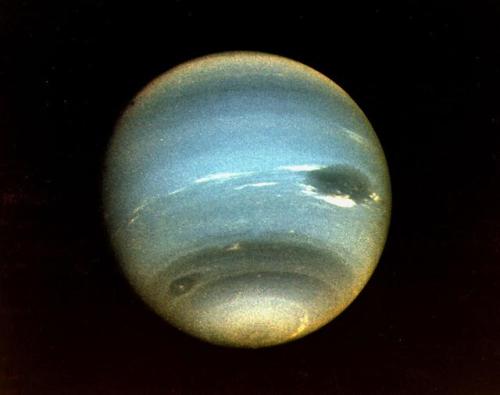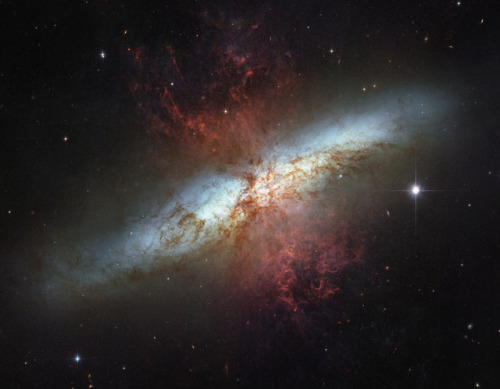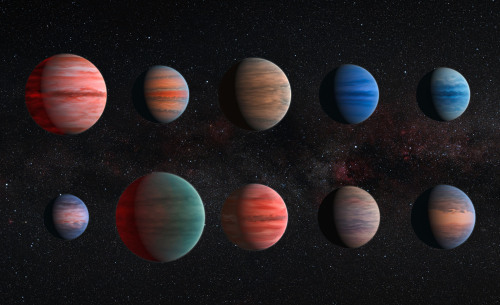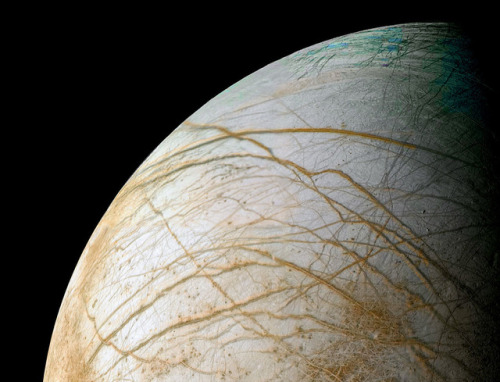Cassini Mission: What’s Next?
Cassini Mission: What’s Next?
It’s Friday, Sept. 15 and our Cassini mission has officially come to a spectacular end. The final signal from the spacecraft was received here on Earth at 7:55 a.m. EDT after a fateful plunge into Saturn’s atmosphere.

After losing contact with Earth, the spacecraft burned up like a meteor, becoming part of the planet itself.

Although bittersweet, Cassini’s triumphant end is the culmination of a nearly 20-year mission that overflowed with discoveries.
But, what happens now?
Mission Team and Data
Now that the spacecraft is gone, most of the team’s engineers are migrating to other planetary missions, where they will continue to contribute to the work we’re doing to explore our solar system and beyond.

Mission scientists will keep working for the coming years to ensure that we fully understand all of the data acquired during the mission’s Grand Finale. They will carefully calibrate and study all of this data so that it can be entered into the Planetary Data System. From there, it will be accessible to future scientists for years to come.

Even beyond that, the science data will continue to be worked on for decades, possibly more, depending on the research grants that are acquired.
Other team members, some who have spent most of their career working on the Cassini mission, will use this as an opportunity to retire.
Future Missions
In revealing that Enceladus has essentially all the ingredients needed for life, the mission energized a pivot to the exploration of “ocean worlds” that has been sweeping planetary science over the past couple of decades.

Jupiter’s moon Europa has been a prime target for future exploration, and many lessons during Cassini’s mission are being applied in planning our Europa Clipper mission, planned for launch in the 2020s.

The mission will orbit the giant planet, Jupiter, using gravitational assists from large moons to maneuver the spacecraft into repeated close encounters, much as Cassini has used the gravity of Titan to continually shape the spacecraft’s course.
In addition, many engineers and scientists from Cassini are serving on the new Europa Clipper mission and helping to shape its science investigations. For example, several members of the Cassini Ion and Neutral Mass Spectrometer team are developing an extremely sensitive, next-generation version of their instrument for flight on Europa Clipper. What Cassini has learned about flying through the plume of material spraying from Enceladus will be invaluable to Europa Clipper, should plume activity be confirmed on Europa.

In the decades following Cassini, scientists hope to return to the Saturn system to follow up on the mission’s many discoveries. Mission concepts under consideration include robotic explorers to drift on the methane seas of Titan and fly through the Enceladus plume to collect and analyze samples for signs of biology.

Atmospheric probes to all four of the outer planets have long been a priority for the science community, and the most recent recommendations from a group of planetary scientists shows interest in sending such a mission to Saturn. By directly sampling Saturn’s upper atmosphere during its last orbits and final plunge, Cassini is laying the groundwork for an potential Saturn atmospheric probe.

A variety of potential mission concepts are discussed in a recently completed study — including orbiters, flybys and probes that would dive into Uranus’ atmosphere to study its composition. Future missions to the ice giants might explore those worlds using an approach similar to Cassini’s mission.
Learn more about the Cassini mission and its Grand Finale HERE.
Follow the mission on Facebook and Twitter for the latest updates.
Make sure to follow us on Tumblr for your regular dose of space: http://nasa.tumblr.com.
More Posts from Xyhor-astronomy and Others

A movie showing the dynamics of the inner part of the Crab Nebula made using the Chandra X-ray Observatory.
Credit: NASA/CXC/ASU/J.Hester et al.

A false-color image of the mid-infrared emission from the Great Galaxy in Andromeda, as seen by Nasa’s WISE space telescope.
Credit: NASA/JPL-Caltech/WISE Team
Resupply Mission Brings Mealworms and Mustard Seeds to Space Station
Orbital ATK will launch its Cygnus cargo spacecraft to the International Space Station on November 11, 2017 from Wallops Flight Facility in Virginia. It will be packed with cargo and scientific experiments for the six humans currently living and working on the orbiting laboratory.

The cargo spacecraft is named the S.S. Gene Cernan after former NASA astronaut Eugene Cernan, who is the last man to have walked on the moon.

Here are some of the really neat science and research experiments that will be delivered to the station:
What’s Microgravity Got to do with Bacterial Antibiotics?
Antibiotic resistance could pose a danger to astronauts, especially since microgravity has been shown to weaken human immune response. E. coli AntiMicrobial Satellite (EcAMSat) will study microgravity’s effect on bacterial antibiotic resistance.

Results from this experiment could help us determine appropriate antibiotic dosages to protect astronaut health during long-duration human spaceflight and help us understand how antibiotic effectiveness may change as a function of stress on Earth.
Laser Beams…Not on Sharks…But on a CubeSat
Traditional laser communication systems use transmitters that are far too large for small spacecraft. The Optical Communication Sensor Demonstration (OCSD) tests the functionality of laser-based communications using CubeSats that provide a compact version of the technology.

Results from OCSD could lead to improved GPS and other satellite networks on Earth and a better understanding of laser communication between small satellites in low-Earth orbit.
This Hybrid Solar Antenna Could Make Space Communication Even Better
As space exploration increases, so will the need for improved power and communication technologies. The Integrated Solar Array and Reflectarray Antenna (ISARA), a hybrid power and communication solar antenna that can send and receive messages, tests the use of this technology in CubeSat-based environmental monitoring.

ISARA may provide a solution for sending and receiving information to and from faraway destinations, both on Earth and in space.
More Plants in Space!
Ready for a mouthful…The Biological Nitrogen Fixation in Microgravity via Rhizobium-Legume Symbiosis…aka the Biological Nitrogen Fixation experiment, will examine how low-gravity conditions affect the nitrogen fixation process of the Microclover legume (a plant in the pea family). Nitrogen fixation is a process where nitrogen in the atmosphere is converted into ammonia. This crucial element of any ecosystem is also a natural fertilizer that is necessary for most types of plant growth.

This experiment could tell us about the space viability of the legume’s ability to use and recycle nutrients and give researchers a better understanding of this plant’s potential uses on Earth.
What Happens When Mealworms Live in Space?
Mealworms are high in nutrients and one of the most popular sources of alternative protein in developing countries. The Effects of Microgravity on the Life Cycle of Tenebrio Molitor (Tenebrio Molitor) investigation studies how the microgravity environment affects the mealworm life cycle.

In addition to alternative protein research, this investigation will provide information about animal growth under unique conditions.
Mustard Seeds in Microgravity
The Life Cycle of Arabidopsis thaliana in Microgravity experiment studies the formation and functionality of the Arabidopsis thaliana, a mustard plant with a genome that is fully mapped, in microgravity conditions.

The results from this investigation could contribute to an understanding of plant and crop growth in space.
Follow @ISS_Research on Twitter for more information about the science happening on space station.
Watch the launch live HERE on Nov. 11, liftoff is scheduled for 7:37 a.m. EDT!
Make sure to follow us on Tumblr for your regular dose of space: http://nasa.tumblr.com.

Image of the planet Neptune seen by the space probe Voyager 2
Image credit: NASA/JPL


Messier 82
Messier 82 is a starburst galaxy about 12 million light-years away in the constellation Ursa Major. A member of the M81 Group, it is about five times more luminous than the whole Milky Way and has a center one hundred times more luminous than our galaxy’s center.
Image credit: NASA/ESA & Hubble
The Daredevil Spacecraft That Will Touch the Sun
In the summer of 2018, we’re launching Parker Solar Probe, a spacecraft that will get closer to the Sun than any other in human history.

Parker Solar Probe will fly directly through the Sun’s atmosphere, called the corona. Getting better measurements of this region is key to understanding our Sun. For instance, the Sun releases a constant outflow of solar material, called the solar wind. We think the corona is where this solar wind is accelerated out into the solar system, and Parker Solar Probe’s measurements should help us pinpoint how that happens.

The solar wind, along with other changing conditions on the Sun and in space, can affect Earth and are collectively known as space weather. Space weather can trigger auroras, create problems with satellites, cause power outages (in extreme cases), and disrupt our communications signals. That’s because space weather interacts with Earth’s upper atmosphere, where signals like radio and GPS travel from place to place.

Parker Solar Probe is named after pioneering physicist Gene Parker. In the 1950s, Parker proposed a number of concepts about how stars — including our Sun — give off energy. He called this cascade of energy the solar wind. Parker also theorized an explanation for the superheated solar atmosphere, the corona, which is hotter than the surface of the Sun itself.

Getting the answers to our questions about the solar wind and the Sun’s energetic particles is only possible by sending a probe right into the furnace of the Sun’s corona, where the spacecraft can reach 2,500 degrees Fahrenheit. Parker Solar Probe and its four suites of instruments – studying magnetic and electric fields, energetic particles, and the solar wind – will be protected from the Sun’s enormous heat by a 4.5-inch-thick carbon-composite heat shield.
Over the course of its seven-year mission, Parker Solar Probe will make two dozen close approaches to the Sun, continuously breaking its own records and sending back unprecedented science data.

Getting close to the Sun is harder than you might think, since the inertia of a spacecraft launched from Earth will naturally carry it in repeated orbits on roughly the same path. To nudge the orbit closer to the Sun on successive trips, Parker Solar Probe will use Venus’ gravity.
This is a technique called a gravity assist, and it’s been used by Voyager, Cassini, and OSIRIS-REx, among other missions. Though most missions use gravity assists to speed up, Parker Solar Probe is using Venus’ gravity to slow down. This will let the spacecraft fall deeper into the Sun’s gravity and get closer to our star than any other spacecraft in human history.

You can get a behind-the-scenes at Parker Solar Probe under construction in a clean room at facebook.com/NASASunScience today (Sept. 25) at 1:45 PM EDT.

Keep up with all the latest on Parker Solar Probe at nasa.gov/solarprobe or on Twitter @NASASun.
Make sure to follow us on Tumblr for your regular dose of space: http://nasa.tumblr.com.

This image shows an artist’s impression of the 10 Hot Jupiter Exoplanets studied using the Hubble and Spitzer Space Telescopes. From the upper left to the lower right corner, these planets are WASP-12b, WASP-6b, WASP-31b, WASP-39b, HD 189733b, HAT-P-12b, WASP-17b, WASP-19b, HAT-P-1b And HD 209458b.
Credit: ESA / Hubble & NASA









Europa
Jupiter’s moon Europa is slightly smaller than Earth’s moon. Its surface is smooth and bright, consisting of water ice crisscrossed by long, linear fractures. Like our planet, Europa is thought to have an iron core, a rocky mantle and an ocean of salty water beneath its ice crust. Unlike Earth, however, this ocean would be deep enough to extend from the moon’s surface to the top of its rocky mantle. Being far from the sun, the ocean’s surface would be globally frozen over. While evidence for this internal ocean is quite strong, its presence awaits confirmation by a future mission.
Europa orbits Jupiter every 3.5 days and is locked by gravity to Jupiter such that the same hemisphere of the moon always faces the planet. Because Europa’s orbit is slightly stretched out from circular, or elliptical, its distance from Jupiter varies, creating tides that stretch and relax its surface. The tides occur because Jupiter’s gravity is just slightly stronger on the near side of the moon than on the far side, and the magnitude of this difference changes as Europa orbits. Flexing from the tides supplies energy to the moon’s icy shell, creating the linear fractures across its surface. If Europa’s ocean exists, the tides might also create volcanic or hydrothermal activity on the seafloor, supplying nutrients that could make the ocean suitable for living things.

Europa Clipper
NASA’s planned Europa Clipper would conduct detailed reconnaissance of Jupiter’s moon Europa and investigate whether the icy moon could harbor conditions suitable for life.
The mission would place a spacecraft in orbit around Jupiter in order to perform a detailed investigation of the giant planet’s moon Europa – a world that shows strong evidence for an ocean of liquid water beneath its icy crust and which could host conditions favorable for life. The mission would send a highly capable, radiation-tolerant spacecraft into a long, looping orbit around Jupiter to perform repeated close flybys of Europa. NASA has selected nine science instruments for a future mission to Europa. The selected payload includes cameras and spectrometers to produce high-resolution images of Europa’s surface and determine its composition. An ice penetrating radar would determine the thickness of the moon’s icy shell and search for subsurface lakes similar to those beneath Antarctica’s ice sheet. The mission would also carry a magnetometer to measure the strength and direction of the moon’s magnetic field, which would allow scientists to determine the depth and salinity of its ocean.
Image credit: NASA / JPL / Galileo / Voyager & Processed by Kevin M. Gill
Credit: NASA & Europa Clipper Mission
What are brown dwarfs?
In order to understand what is a brown dwarf, we need to understand the difference between a star and a planet. It is not easy to tell a star from a planet when you look up at the night sky with your eyes. However, the two kinds of objects look very different to an astronomer using a telescope or spectroscope. Planets shine by reflected light; stars shine by producing their own light. So what makes some objects shine by themselves and other objects only reflect the light of some other body? That is the important difference to understand – and it will allow us to understand brown dwarfs as well.

As a star forms from a cloud of contracting gas, the temperature in its center becomes so large that hydrogen begins to fuse into helium – releasing an enormous amount of energy which causes the star to begin shining under its own power. A planet forms from small particles of dust left over from the formation of a star. These particles collide and stick together. There is never enough temperature to cause particles to fuse and release energy. In other words, a planet is not hot enough or heavy enough to produce its own light.

Brown dwarfs are objects which have a size between that of a giant planet like Jupiter and that of a small star. In fact, most astronomers would classify any object with between 13 times the mass of Jupiter and 75 times the mass of Jupiter to be a brown dwarf. Given that range of masses, the object would not have been able to sustain the fusion of hydrogen like a regular star; thus, many scientists have dubbed brown dwarfs as “failed stars”.

A Trio of Brown Dwarfs
This artist’s conception illustrates what brown dwarfs of different types might look like to a hypothetical interstellar traveler who has flown a spaceship to each one. Brown dwarfs are like stars, but they aren’t massive enough to fuse atoms steadily and shine with starlight – as our sun does so well.

On the left is an L dwarf, in the middle is a T dwarf, and on the right is a Y dwarf. The objects are progressively cooler in atmospheric temperatures as you move from left to right. Y dwarfs are the newest and coldest class of brown dwarfs and were discovered by NASA’s Wide-field Infrared Survey Explorer, or WISE. WISE was able to detect these Y dwarfs for the first time because it surveyed the entire sky deeply at the infrared wavelengths at which these bodies emit most of their light. The L dwarf is seen as a dim red orb to the eye. The T dwarf is even fainter and appears with a darker reddish, or magenta, hue. The Y dwarf is dimmer still. Because astronomers have not yet detected Y dwarfs at the visible wavelengths we see with our eyes, the choice of a purple hue is done mainly for artistic reasons. The Y dwarf is also illustrated as reflecting a faint amount of visible starlight from interstellar space.
In this rendering, the traveler’s spaceship is the same distance from each object. This illustrates an unusual property of brown dwarfs – that they all have the same dimensions, roughly the size of the planet Jupiter, regardless of their mass. This mass disparity can be as large as fifteen times or more when comparing an L to a Y dwarf, despite the fact that both objects have the same radius. The three brown dwarfs also have very different atmospheric temperatures. A typical L dwarf has a temperature of 2,600 degrees Fahrenheit (1,400 degrees Celsius). A typical T dwarf has a temperature of 1,700 degrees Fahrenheit (900 degrees Celsius). The coldest Y dwarf so far identified by WISE has a temperature of less than about 80 degrees Fahrenheit (25 degrees Celsius).
Sources: starchild.gsfc.nasa.gov & nasa.gov
image credit: NASA / JPL-Caltech
-
 sassyperfectionsandra liked this · 3 months ago
sassyperfectionsandra liked this · 3 months ago -
 wingedstudentkingdom liked this · 1 year ago
wingedstudentkingdom liked this · 1 year ago -
 xtimoleon liked this · 2 years ago
xtimoleon liked this · 2 years ago -
 colorfulsuittree liked this · 2 years ago
colorfulsuittree liked this · 2 years ago -
 rudytazar70 liked this · 2 years ago
rudytazar70 liked this · 2 years ago -
 7thsignpoeticpaperchaser liked this · 3 years ago
7thsignpoeticpaperchaser liked this · 3 years ago -
 cloversposts liked this · 3 years ago
cloversposts liked this · 3 years ago -
 addictsworldsblog liked this · 3 years ago
addictsworldsblog liked this · 3 years ago
For more content, Click Here and experience this XYHor in its entirety!Space...the Final Frontier. Let's boldly go where few have gone before with XYHor: Space: Astronomy & Spacefaring: the collection of the latest finds and science behind exploring our solar system, how we'll get there and what we need to be prepared for!
128 posts